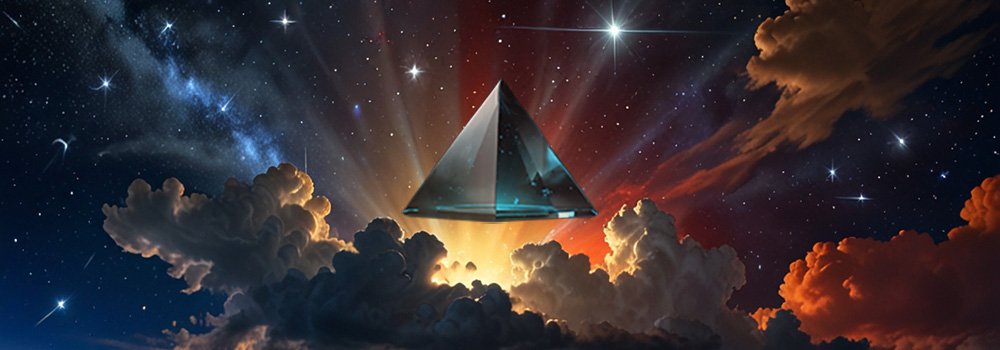The AAP Blog
Earth, Wind & Fire
Reflections on Music Made to be Forcefully Positive
September!, 2024... (and no clouds)
“Earth, Wind & Fire” never offered easy categorization as the band gained prominence in the early ‘70s. Funk? Jazz? R&B? Afro-pop? One critic suggested they were the love-child of Sly and the Fifth Dimension!? Another used the words “enchanting”, “melodic” and, maybe most descriptive, “avant garde”. So much in that last phrase approaches the truth about EWF; a descriptor uncharacteristic of most ‘70s popular music. (Fact is, EWF’s earliest big success came with their 1971 debut album certified gold in France. Yes, avant garde. Eclectic.)
In some ways, Maurice White’s musical statement seemed powered by rebellion against "pop" convention. EWF was not the average band of any stripe. It's possible, too, his creative approach was energized by something simpler. It could be he just had his “voice” tuned to an informed, personal sound from many sources, and was clear on what those influences told him to “say” to the world as EWF's principal member. The band’s music took on the qualities of an ornate signature; curls and curves, sharp points, steep elevations and descents, and elliptical reversals. And lots of runs. With all the “i’s” dotted and the “t’s” crossed in a flourish. To call the instrumental side of their music unique is to diminish its personality and character. But this post is not about the band’s above-worthy, nearly nonpareil musical notes and the way those notes behaved at the hands of these musicians.
The lyrics. The titles. The words. Thoughtful, soaring, positive, engaging, enriching. Always encouraging. Also, realistic. (Advisory: no lyrics will be laid out here.) To be clear, others before and since have crafted hopeful and uplifting poetry to convey atop the bars. In those cases it was neither incidental nor simply occasional, but for those artists it seemed not to encompass the main point of their being. With EWF, moving ever forward was the persona, the image, the identity. It’s hard to hear, or even think of, an Earth, Wind & Fire piece and not turn your head, figuratively, to the sky. And it’s important to bear witness to the spirit of the times as this sound emerged.
In the early 1970s, much of the Civil Rights Movement as is popularly embodied (let’s say the period from Brown vs. Board of Education (1954) to MLK’s assassination (1968)) was waning. For African Americans, advances in voting rights, jobs, housing, public accommodations and more were on the books, but the work of taking those hard-won gains off the page and into the real world was very much a work in progress. Night riders and white flight (North and South) and police brutality, urban riots, contentious scenes around busing and school desegregation. Events such as church bombings, racially-motivated murders, the Malcolm X, King and Kennedy assassinations were all still very resonant as the 1960s closed and the ‘70s opened. It would be fair to ask how the turmoil informed peoples’s personal conceptions, their senses of self. What had this environment done to their spirits, their souls?
“Head to the Sky” (Platinum) was EWF’s fourth album, May 1973. (The popular reception of the intervening two since that debut, French-gold album had been...eh.) Less than a year after “Head to the Sky” came “Open Our Eyes” (Platinum) with the group’s first Top 40 hit on the Billboard Hot 100, “Devotion”. The tone of that single was one of a gospel love song, to everybody, and a path to brighter personal days. Sit with the words of that one song, “Devotion”, and put it in context with the times and you see the glinty, shiny fine point of the Maurice White needle popping through the fabric. Thread will follow, and it is a long, long strand. With lots of color.
(Speaking of threads, the group had always brought a bitchin’ sense of its own sartorial splendor to stage and album covers. Bell-bottoms, homeland-homage dashikis, a bit of beefcake, stylish jeans and natty socks. Their next two album covers would display a look that became classic EWF: less ornamentation in revivalists black and white tones, still saucy, with minimalist leisure-suit nods to the established style of the times.)
If the message hadn’t been loud and clear to that point, 1975 would erase doubt with “That’s the Way of the World” (Triple Platinum). Again, it’s not necessary to cite lyrics when you read song titles like “Shining Star”, “See the Light”, “Yearnin’ Learnin’”, and the title song. The ’76 studio album “Spirit” (Double Platinum) included “Getaway” (a song of guidance), “On Your Face” (finding your internal sweet spot), “Imagination” (look at what you can do); a broadening of EWF’s messaging to listeners encouraging a personal, introspective, hopeful journey.
This theme continues beyond the bicentennial year. And to be sure, the band knew how to do even love songs in their own vein, as is witnessed in the psychological, self-questioning narrative in “Reasons”. To use a word most popular at the time, they were “heavy”. They were also more than collaborative: a dynamic and magical brother- (and sister-) hood with lots of shared input and shared outlook under a guiding founder who pretty much knew, or at least sensed, his own “voice” and the spirit, the soul, the divinity which made that “voice” sing.
It may be too much to assign significant credit to EWF for helping give its broad spectrum of fans—each as an individual—a sense of purpose, perspective and peace in fraught, disruptive and uncertain times. Maybe, but let’s do it, anyway. Our most powerful messages are the ones we tell ourselves, or repeat over and over from others. Looking at EWFs body of music, sustained, it was unarguably special and stridently more pro than con. Words to live by, and we just want to give “Gratitude”.
Maurice White left us in 2016, and he remains a force for good in our world. As of this writing the band still performs and includes notables Verdine White, Phillip Bailey and Ralph Johnson from that ‘70s core, and Phillip Bailey, Jr.
An Earth, Wind & Fire puzzle is on the way in 2024. Stay tuned.



